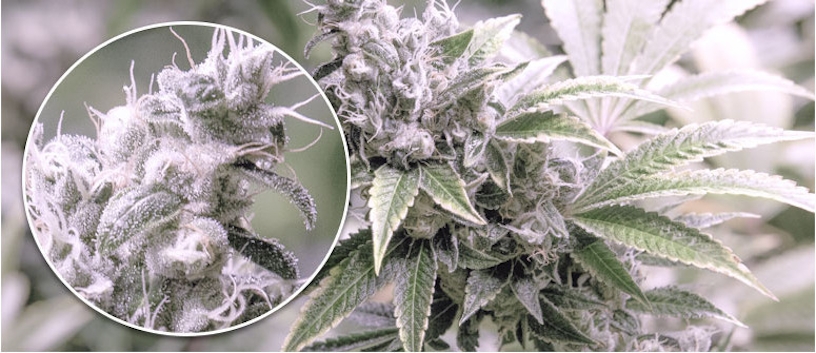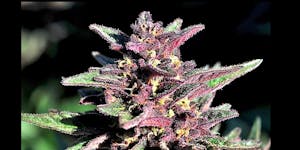
What Is Albino Weed And Does It Really Exist?
Myth or reality? Albino weed is a rare but not unknown phenomenon.
Is this phenomenon real or just another urban legend circulating among stoners and growers?
When you look for cannabis strains, you may come across buds of different shades and colors, like deep purple, orange pistils or just the characteristic vibrant green full of trichomes. But, if you’ve been around long enough, you may have stumbled upon the unlikely find of a snow-white bud. You might ask, is this real?
Many may be surprised that, from time to time, an albino plant is born. Albinism is also possible in plants, and while it is a rare phenomenon, it is not impossible, and there are a couple of different possible causes that make the buds look like snowflakes.
Let’s embark on a journey to unravel the mysteries surrounding the elusive albino cannabis.
Is Albino Weed Possible?
Yes, it is. It’s not common, but it’s not impossible either.
Contrary to popular belief, albino cannabis is not a figment of imagination or meticulous breeding. It is a real, albeit extremely rare, occurrence. Like albino animals, albino plants lack pigmentation, especially chlorophyll, the green pigment crucial for photosynthesis.
Why Does This Happen?
The key lies in the plant’s coloring agent, chlorophyll. So albinism in cannabis is due to a deficiency in the production of chlorophyll.
This essential pigment, responsible for harnessing light energy during photosynthesis, is scarce in albino plants.
Spoiler alert: This pigment – chlorophyll – not only gives color, but is vital to the plant’s survival. Consequently, these spectral specimens struggle to synthesize energy efficiently, hindering their growth and viability.
The Albino Weed

Photo by Stock
You already know that the green color of leaves and other plant parts comes from a special pigment called chlorophyll. But, chlorophyll does much more than provide coloration to the plant.
Chlorophyll absorbs the specific wavelengths of light it needs (blue, ultraviolet, and red), and what it doesn’t absorb bounces back, causing us to see a green color when we look at a plant in sunlight or other white light. When chlorophyll absorbs the right types of light, it converts the light energy into usable sugar through the process of photosynthesis.
Albino plants have no chlorophyll. That means they have no pigment to absorb the sun’s energy.
Basically, these plants have lost their ability to respond adequately to light, as if they were constantly in the dark. This is why most albino plants die before reaching maturity.
Why A Cannabis Plant Turns Albino

Photo by Daniel Oberg
For now, there are two main reasons why a plant turns albino:
Genetics
As in humans, albinism in plants is a rare genetic anomaly. Albinism is a recessive genetic trait that weakens plants. This trait makes plants weaker and can sometimes show signs of albinism from the time they are seedlings.
Not all albino plants are completely white; some only lose chlorophyll in some parts, which can be caused by genes or the environment in which they grow.
There are some albino plants, such as the albino sequoia, that can survive on their own. But, instead of photosynthesizing like other plants, the albino sequoia becomes a parasite and gets nutrients from other plants. Although these plants can survive, they are smaller and weaker than their normal relatives.
In addition, when breeders mix different varieties of plants, albino traits may appear from time to time. This is because certain albino genes may be expressed more when different plants are crossed.
Light Whitening
Light bleaching is another major cause of whitening. Perhaps some strains are more genetically predisposed to turn white under certain lighting circumstances.
It is usually the case that plants turn white in the areas closest to the lights. Occasionally, the buds and upper leaves of a plant turn white when the light intensity is too strong. This is a major source of stress for the plant, as the bleached bud then loses the ability to photosynthesize.
Is White Cannabis Good?

Photo by Louis Hansel
The appeal of albino cannabis is undeniable and arouses fascination and admiration among growers and enthusiasts alike. However, beneath its ethereal beauty lies a harsh reality: albino plants are inherently disadvantaged.
Unable to photosynthesize effectively, they struggle to thrive, let alone produce potent buds.
So, as you may have guessed, the answer to this question is simple: no. White cannabis cannot harness the sun’s energy in the same way as a green, purple or red cannabis plant.
The coloration of the leaves and buds helps the plant absorb sunlight and convert it into energy. Without the chlorophyll needed to convert light into sugars, the plant cannot survive.
While providing supplemental nutrients can help, the overall quality of the crop will suffer.
What Do I Do If My Cannabis Plant Turns White?
If a cannabis plant starts to turn white or show signs of albinism, nutritional supplements can help prevent your crop from being a total failure if it still shows some green coloration.
Another recommended option is to adjust the lighting. You may want to consider switching to a lower wattage LED grow light. Adjusting the height of the light can also be beneficial. The lights should be close enough to provide adequate lumens to the entire canopy, but not so close that the plants show signs of heat stress.
If a plant is white from the seedling stage, it probably needs to be discarded.
Herb Recommended Products:
READ MORE










